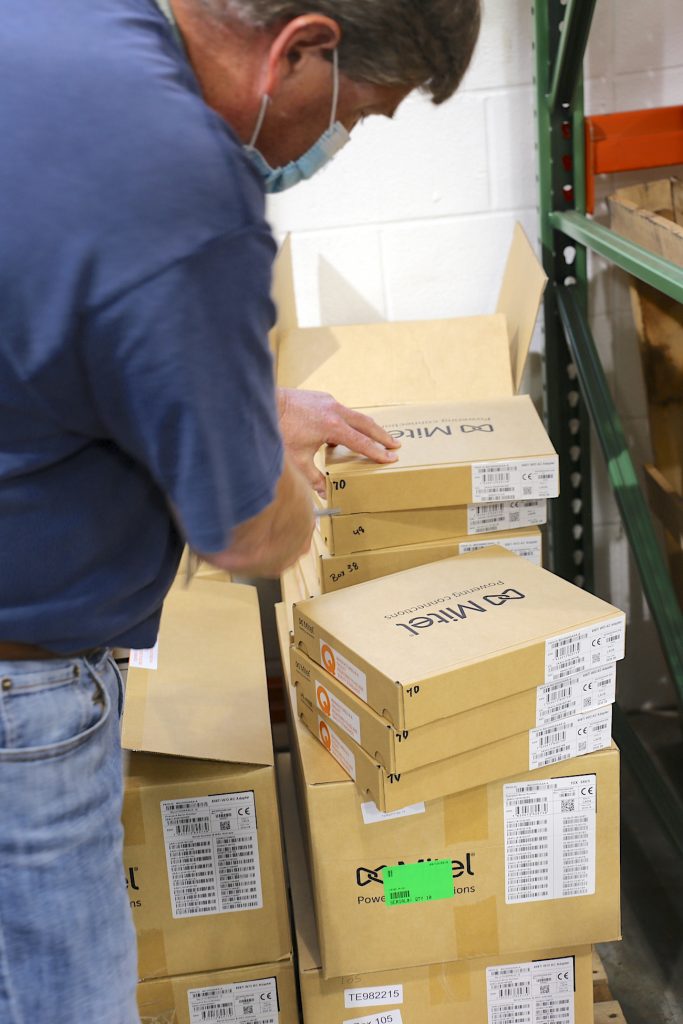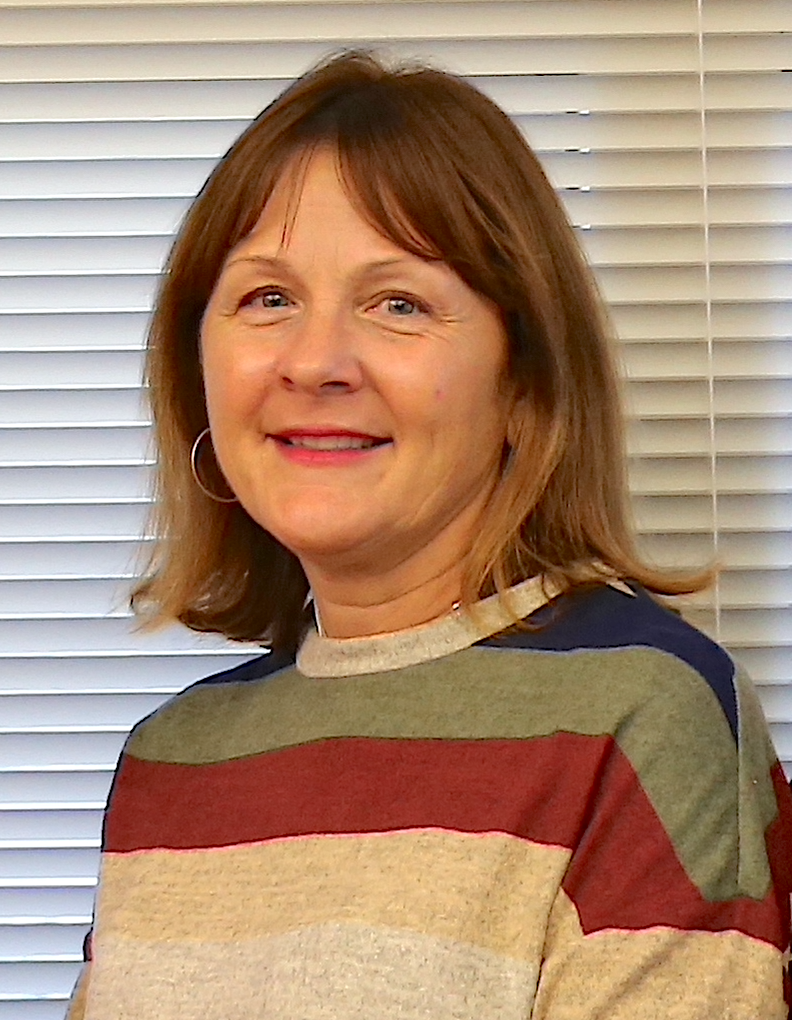
In its multi-year project to migrate University’s phone service to AT&T from Verizon, ITS has now moved about 7,000 phones over to the AT&T network and will soon port its largest batch of phones so far.
ITS has 13,500 working numbers left to move. The project’s fifth port is tentatively scheduled for February 25. In this batch, the ITS project team will migrate 4,269 phones across 124 buildings and 25 divisions.
To name just a few, this port will include buildings that house all or parts of the College of Arts and Sciences, the Hussman School of Media and Journalism, the School of Medicine, Eshelman School of Pharmacy and the School of Information and Library Sciences.
Expect to finish in early 2024
After this port, ITS will have about 9,000 working phones left to move to the AT&T network. The project team expects to complete the project in early 2024. ITS kicked off the migration in August 2020 by moving 7,500 nonworking numbers to the new phone system. In early May 2021, ITS started moving phone lines, by building, in groups of approximately 2,500.
“The process of moving phone numbers, or number porting, can take as long four months from the time UNC provides the information to the service provider,” said Cheri Beasley, ITS Voice Services Manager. (Get to know Beasley by reading her profile at the end of this story.)
This timeframe includes “the amount of time needed for UNC to prepare, but more importantly this timeframe is required by the service providers as they are governed by the Federal Communications Commission for local number porting,” she said. “Data from customer service records is ‘scrubbed’ multiple times and submitted as a port order to the losing carrier. The losing carrier can accept or reject the order at any time. If we are lucky, and it can get right up to the last minute, we do not receive a rejection and we stay on track. If we receive a rejection, the entire process is required to restart.”
Saves money, adds features
The University needed to migrate to a new phone service because Verizon is discontinuing the service Carolina uses. Verizon is eliminating the existing legacy system when the University’s contract ends in 2023.

This gave ITS the opportunity to evaluate other providers, save money and provide additional features that support mobile and remote work settings. The move affects all campus phone lines, such as fax lines, conference room phones and main lines.
Moving to the cloud
ITS Voice Services decided to use the opportunity to switch to the cloud-based AT&T system, which comes with new services and features that will benefit campus users. They include call center service, soft client, voicemail to email, cloud-based voicemail, more flexible caller ID, and a more advanced, better way of providing 911.
Many units participating
The project involves many groups within ITS and entails much more than porting. The project team consists of Voice Services, Project Portfolio & Change Management, Transport Operations, Networking, the ITS Service Desk and Digital Communications.
In addition to migrating the phone service, thousands of phones across campus must be upgraded to work on the AT&T network. The Transport Operations team goes into each building, locate the phones and switch out the existing phones with the latest models.
Finished four ports
The project team has completed four phone ports. Number porting occurs when an organization moves phone numbers from one carrier (Verizon) to another (AT&T). As we mentioned, porting is regulated by the Federal Communications Commission.

Multiple challenges
The phone services project team has tackled multiple challenges, said Brenda Carpen, Director, ITS Project Portfolio & Change Management. Among them are:
- Identifying working phones vs. non-working phones. With most of the campus working remotely until last fall, many phones were disconnected. As people returned to campus, those phones reappeared on the network.
- Locating phones in the building. Offices are locked, phones are disconnected, and faculty and staff are understandably nervous about having technicians coming in and out of their offices.
- Miscommunications and human errors on the vendor side (one of which caused a major outage for Verizon customers) make a complex project even more complicated and frustrating.
Adjusting along the way
ITS teams have learned from each port and adjusted their approach, Carpen said. Highlights include:
- Implementing a point-in-time snapshot of phones on the network in a building to port. On port day, sometimes phones in a building don’t get on the port schedule because they were not on the network when Voice Services took the snapshot. ITS handles those phones after the port.
- Adjusting project and change management activities. The project team is using Tableau for publishing reports, holding Town Hall meetings for IT staff impacted by the port, posting short to-do items and reminders for IT staff in Microsoft Teams, and is using the project website as the go-to source of all project information.
- Collaborating with University units to optimize approaches to obtain access to offices, upgrade phones and port day activities.
- Better communication and improved responses from the vendors. “We hope that this will translate to a much smoother port and transition post port,” Carpen said.
Carpen added that she’s “pleased that each group is open to making changes to improve the porting experience for our users.”
Meet Cheri Beasley, head of ITS Voice Services
Cheri Beasley is Manager of ITS Voice Services.
Years with UNC System: 21, including 18 with UNC-Chapel Hill and three with UNC Health
Personal: Grew up in Greensboro. Lives in Chatham County. Married. Mother of three. First grandchild due in May.
Education: Bachelor’s in journalism, UNC-Chapel Hill
Scope of job: Oversees nine employees in two teams — the operator group and the Voice Services group that supports the three phone systems that the unit manages. The unit supports phones, hardware and software, handles database administration and billing, works with multiple service providers, and procures and supports the network connectivity options for remote sites.
Current focus: Migrating the campus from the Verizon voice-over-IP phone system to AT&T VoIP over three years. Completed the first year of the phone services migration.
Perspective on the job: I really like — and some days even love — what I do. I’ve always really liked it because it is challenging and it’s never a dull moment. You have to be very focused and pay attention to detail. It’s not a place you want to work if you want to leave at 5 o’clock or even be off at night or on the weekends and not be bothered with a problem. If there’s an outage, you step up to the plate and you resolve it. Those things that you can’t control are frustrating and challenging. It’s challenging to implement a new phone system. The new phone system that we’re rolling out now took years to design the architecture and implement the procurement process. The job is challenging and yet it’s interesting. It’s also very rewarding when you know you’ve landed on the right service for the University and one that will improve your staff members’ provisioning of the service.
How did you get into telecommunications? I didn’t know what I wanted to do when I graduated from college. My father, who worked in telecommunications at Bell South at the time, strongly recommended that I go to work for Bell South. I worked for Bell South for about 13 years.
What jobs have you had in telecom? I have worked in nearly every area. I worked as an operator for a few months and as a customer service representative for three years. I wasn’t very good at being tied to my desk, so I became a service technician. I climbed poles and carried ladders. From there, I moved into marketing. I supported the higher ed and state government accounts as a service consultant, and then moved up to project manager. After Bell South, I worked for Duke University and UNC Health before moving over to UNC campus.
Activities outside of work: Avid runner, walker, jogger. Rarely miss a day.

